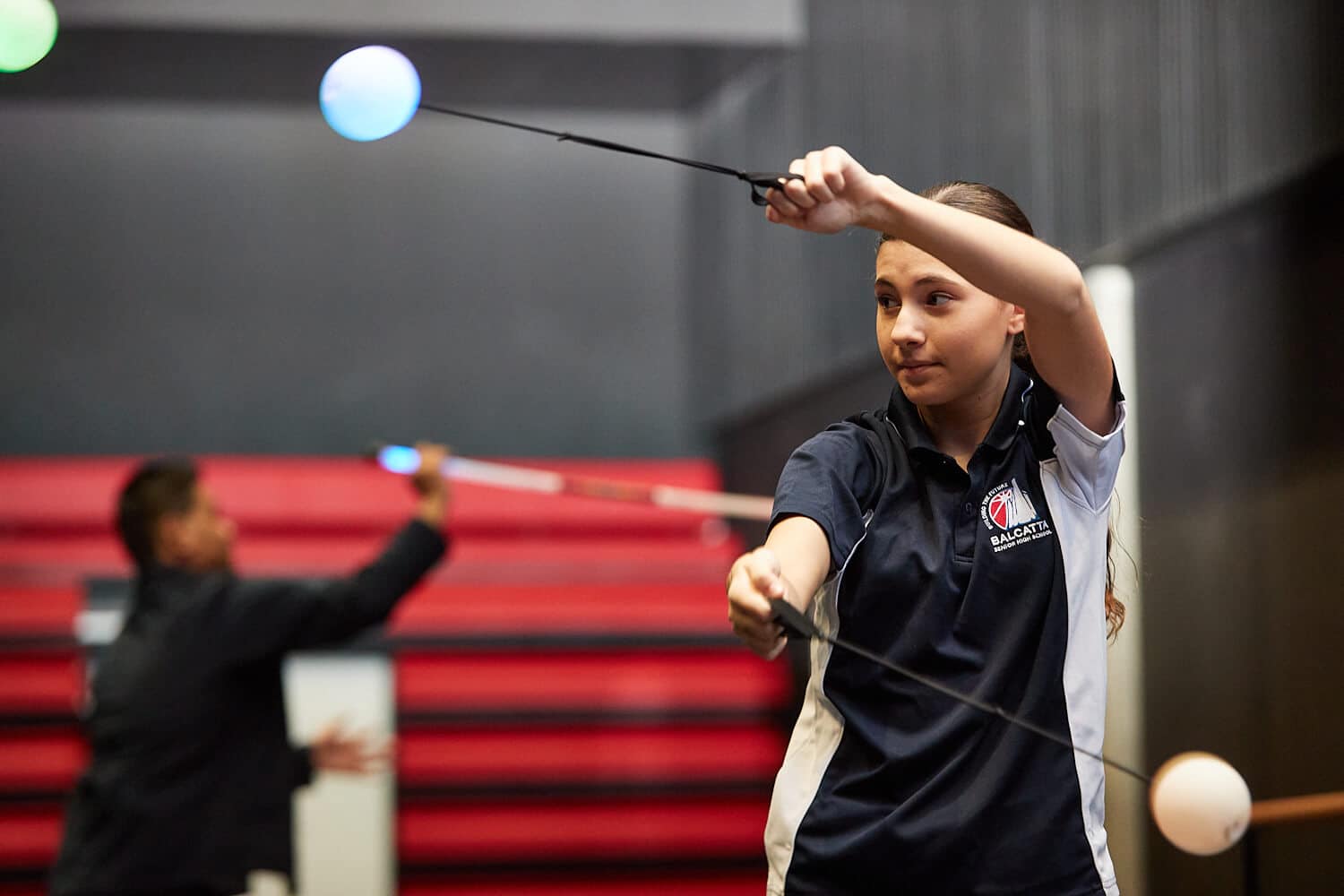The Arts
In the Arts our goal is to look at each student’s individual needs and tailor our programs to suit them.
Drama
Drama students will be encouraged, through a range of opportunities, to plan, develop and present drama to a variety of audiences by safely using processes, techniques and conventions of drama. Drama will be improvised, student-devised or taken from appropriate, published script excerpts (e.g. Australian drama or world drama) using selected drama forms and styles
(Note: students are expected to present a scripted drama and improvisation performance at least once over Year 7 and Year 8).
Student work in devised and/or scripted drama is the focus of informal reflective processes using general drama terminology and language. Students are encouraged to develop their use of extended answer forms and interviews, using drama terminology, language and different forms of communication, based on own drama and their experience of the drama of others.
Students will develop physical skills specific to a range of performance styles and will gain understanding of performance spaces, design, rehearsal and dramaturgy processes and safe use of sound and lighting equipment in a performance space. They will also explore the discipline required to prepare performances for specific audiences and purposes in a range of formal and informal locations.
Drama forms and styles for Year 7: Cirque and circus, medieval theatre, physical theatre, aboriginal theatre, clown makeup and costume design, busking performance
Drama forms and styles for Year 8: readers’ theatre, Greek theatre and mask work, realism or aboriginal theatre, special effect makeup
Drama forms and styles for Year 9: multi-formed devised drama, physical theatre, commedia dell’arte, or Epic or Kabuki theatre, Gothic Horror, set and costume design, special effect makeup
Drama forms and styles for Year 10: Grotowski’s Poor Theatre, Youth Theatre, Contemporary Aboriginal Theatre, Theatre of the Oppressed, Theatre of the Absurd, or Butoh.
http://k10outline.scsa.wa.edu.au/home/p-10-curriculum/curriculum-browser/the-arts/drama3
Visual Arts
The syllabus is based on the requirement that all students will study at least two of the five Arts subjects from Pre-primary to Year 8. It is a requirement that students study a performance subject and a visual subject.
Students have opportunities to use and apply visual language and artistic conventions in their design and production process. They create 2D and/or 3D artworks through projects which encourage personal response and an understanding of compositional structure. Students are made aware of the need for safe visual arts practices, and present their artworks for display.
Students are introduced to an awareness of cultural, social and historical contexts that are embodied in artworks/art style which, in turn, allows them to link their own production to a given context.
Students are introduced to a critical analysis framework to analyse artworks and use art terminology when responding.
Teachers are required to address knowledge and skills in Visual Arts through one art form and art style below. Other art forms and art styles may be used in addition to teach knowledge and skills in Visual Arts.
Art forms: 2D (drawing, painting, printmaking, textiles, illustration) and 3D (ceramics, sculpture, installations).
Art styles: Aboriginal and Torres Strait Islander art, contemporary Australian and international art.
http://k10outline.scsa.wa.edu.au/home/p-10-curriculum/curriculum-browser/the-arts/visual-arts2
In Years 7 and 8 students will be offered the opportunity to explore a range of Arts contexts before selecting options including Photomedia, Urban Art and Drama in Years 9 and 10. For more details on these and our Selective Arts Courses (Gifted and Talented Visual Arts, Music, and Specialist Dance), please see our Year 9 and Year 10 Course Selection Booklet.
